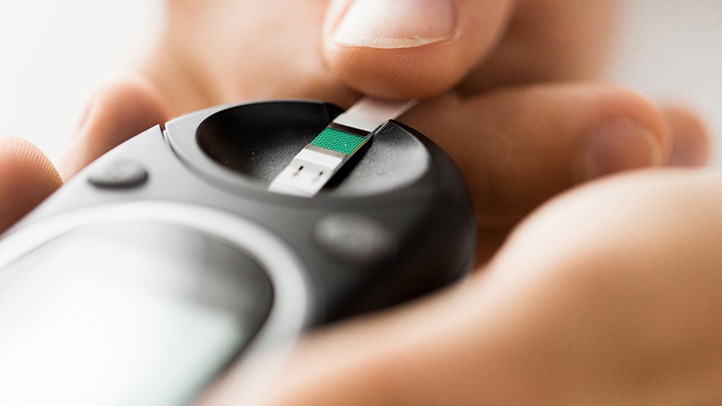"Managing diabetes doesn’t stop with a diagnosis and a prescription. Regular blood glucose (sugar) testing at home also plays an important role. Keeping track of your blood sugar lets you know how well your diabetes management plan is working and can help you and doctor determine if any changes need to be made.
While an A1C test gives you and your doctor a picture of how well you’ve been controlling your blood sugar for the past few months, daily blood tests provide more immediate and actionable data.
“You need to test your blood sugar to help determine your blood sugar pattern,” says Ghandi Saadeh, MD, an endocrinologist with Sentara Endocrinology Specialists in Norfolk, Virginia. Your pattern is the unique way that your blood sugar rises and falls throughout the day in response to food, activity, sleep, medication, and other factors.
“For example, by checking your blood sugar daily, you can tell more about the food you should be eating, whether the meal you just ate was too much, too little, or didn’t affect you," Dr. Saadeh says. "It can help people with diabetes gauge their diet and monitor their progress." Once you understand your pattern, he says, you can let your doctor know what works, what doesn’t work, and what worries you.
Here are five tips for establishing a blood sugar testing regimen:
- Know your target ranges:
In general, the American Diabetes Association (ADA) recommends a range of 80 to 130 milligram/deciliter before a meal, and less than 180 mg/dL two hours after eating. “But target ranges depend on an individual’s situation," says Sacha Uelmen, RD, CDE, director of the University of Michigan's adult diabetes education program in Ann Arbor. "For example, someone with diabetes who is elderly with complications will have a higher target range than someone with diabetes who is in optimal health." And your ranges may change over time. Talk to your doctor or a diabetes educator to understand what range of blood sugar you're looking for.
- Decide when to test your blood sugar:
The ADA recommends using blood sugar testing to find out what affects your blood sugar throughout the day. “Do experiments,” Uelmen says. “Change some things up on your own and see what works and what doesn’t.” For example, one day you might test before a meal and two to three hours afterward, she says. Then, based on how that meal affected your blood sugar, you might change some part of that meal — such as eating more vegetables and less pasta or rice — and retest the next day. You can use the same strategy to learn how different snacks before bed affect your morning blood sugar levels or how a walk after dinner affects evening blood sugar levels, Uelmen says. Keep a log of results with notes about activity, diet, and other factors that could affect your blood sugar.
- Clean your hands:
Wash your hands with soap and warm water before you test. “The test strips are sensitive, and you want to make sure there’s nothing on your hands,” Uelmen says. Testing without washing first can result in falsely elevated results if you’ve touched anything containing sugar. For example, if you test without washing after eating an orange, your results could include some of the orange juice.
- Pick a good testing spot:
“People with diabetes often will have a favorite finger to test, but then that finger gets callused,” Uelmen says. She recommends using the sides of your finger, not the pad, because it may be less painful there. Alternative sites, like your arms, can provide useful blood sugar information but might bruise more easily. If you're doing an experiment with your testing, such as before and after a meal, use the same site for both tests.
- Know how to use your supplies:
Read the instructions and follow them as you use your blood sugar meter. Pay attention to any limitations. Some meters, for instance, can’t be used on alternative testing sites, Uelmen says. Make sure you check your test strips to be sure they’re clean, dry, and not expired. Also make sure to change your lancet. “Every time you use it, it gets duller,” Uelmen says. “If you don’t change it every time, change it at least once a day if you’re doing multiple tests.” Talk to your pharmacist about how to properly dispose of the lancets, also referred to as “sharps.” The Centers for Disease Control and Prevention emphasizes that lancets or meters shouldn’t be shared with another person.
* When to Call Your Doctor About Your Blood Sugar:
Record your blood sugar results in a log or a download from your meter and share them with your doctor at your next appointment. You should also call him or her if:
You aren’t sure why you’re getting certain blood sugar results or you don’t know how to respond to them.
You’ve been testing your blood sugar to find out how diet or exercise affects you and the results worry you.
“Testing your blood sugar can be a hard part of diabetes management for many people," Uelmen says, so "make the most out of it. Empower yourself to learn from it instead of just reporting back to your doctor."
Share this util information!!!
Fuente: www.everydayhealth.com
